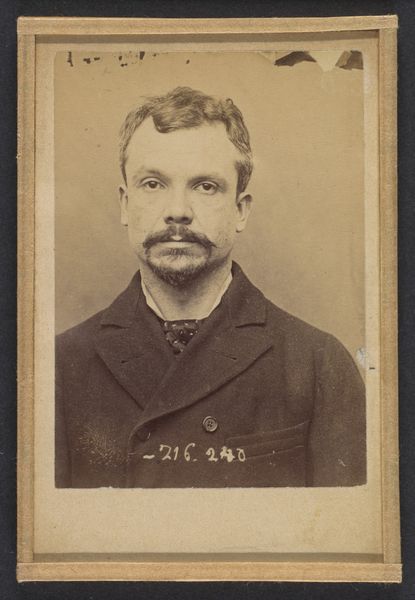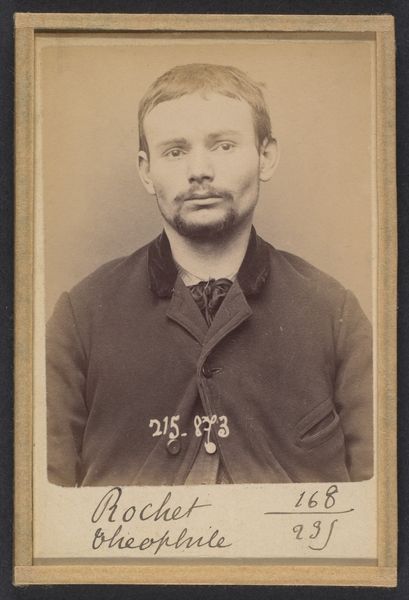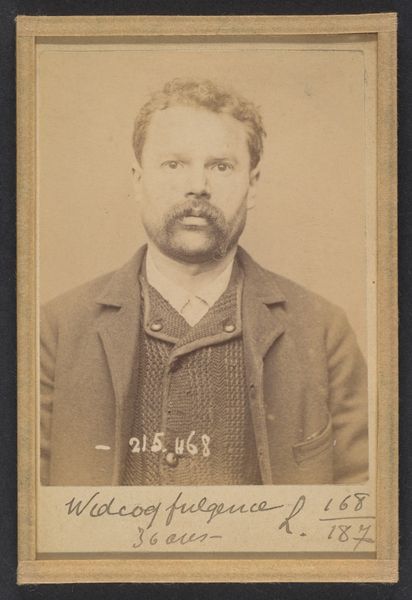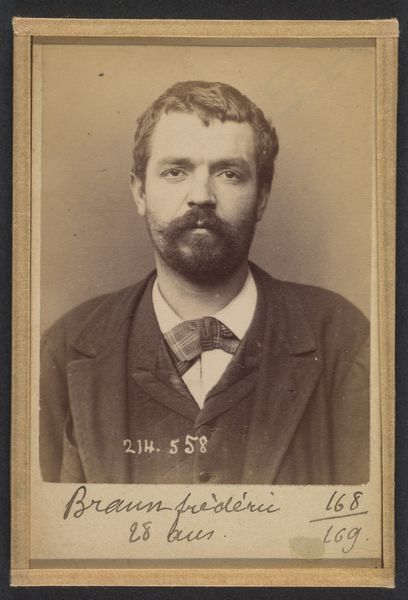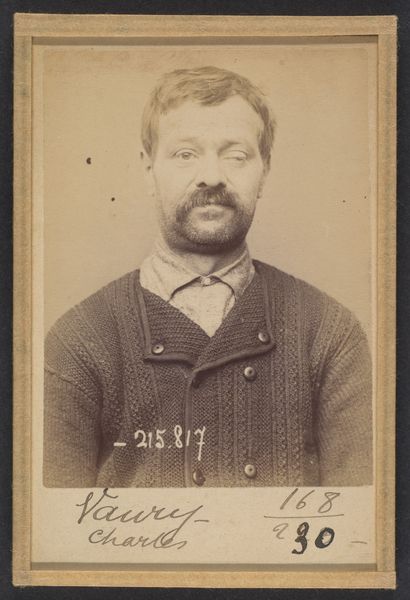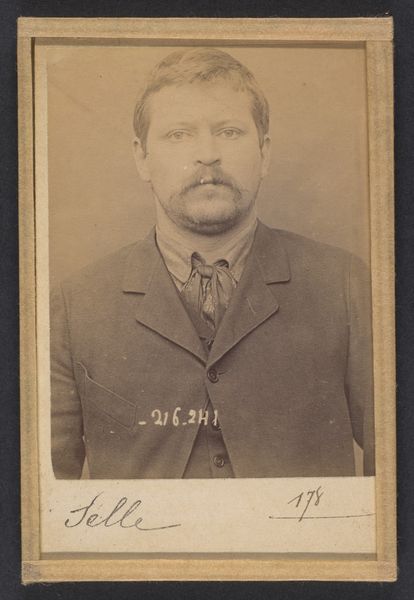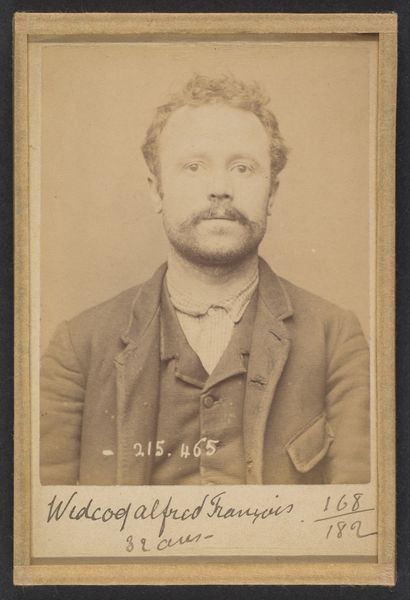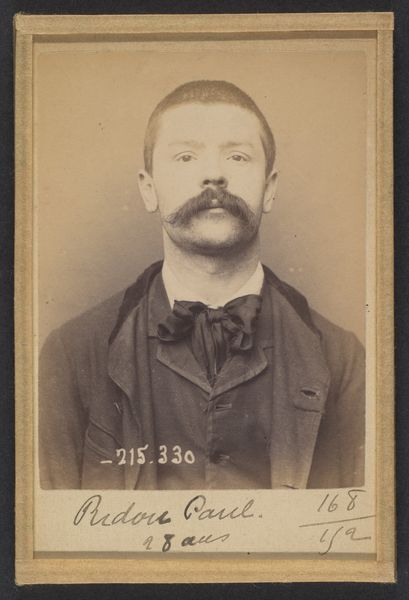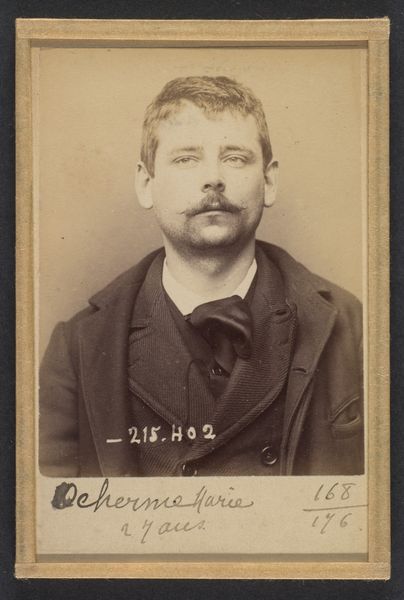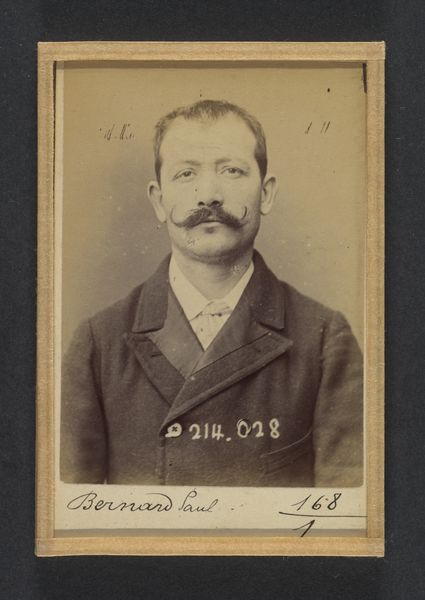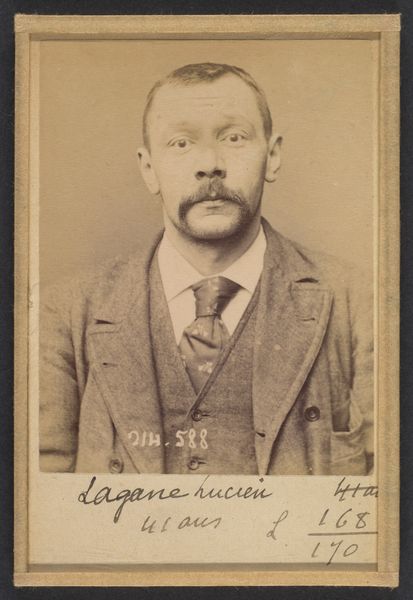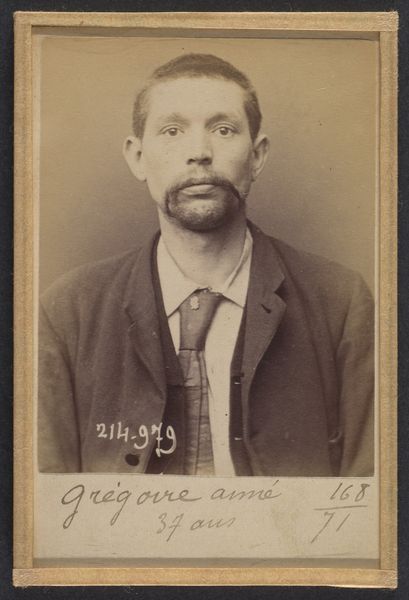
Chericotti. Paul. 35 ans, né à Milan (Italie). Marchand de volailles. Anarchiste/Assoc. de malfaiteurs. 25/3/94. 1894
0:00
0:00
print, paper, photography, gelatin-silver-print
#
portrait
# print
#
paper
#
photography
#
historical photography
#
gelatin-silver-print
#
19th century
#
men
#
ashcan-school
Dimensions: 10.5 x 7 x 0.5 cm (4 1/8 x 2 3/4 x 3/16 in.) each
Copyright: Public Domain
Curator: Looking at this arresting portrait, "Chericotti. Paul. 35 ans, né à Milan (Italie). Marchand de volailles. Anarchiste/Assoc. de malfaiteurs. 25/3/94", a gelatin silver print created by Alphonse Bertillon in 1894, I'm struck by its immediacy. There's a weightiness here, a solemn quality, don't you think? Editor: Absolutely. It has the starkness of a mugshot. And, in essence, that's exactly what it is. Bertillon, a French police officer and biometrics researcher, pioneered the practice of systematically photographing criminals, recording detailed measurements to categorize and identify them. This print, currently housed at The Met, is part of that project, that problematic, yet fascinating history. It represents an attempt to codify human identity for the purposes of control and surveillance. Curator: Control through representation – such an incisive concept, particularly in relation to someone labeled as an anarchist. What resistance might this individual have offered? Is this photograph a silencing in itself? Was this “scientific” categorizing simply a form of social oppression disguised as progress? The very description provided, merchant of poultry and anarchist, reveals much of the societal assumptions in play at the time. It really underlines the way marginalized groups were, and still are, subject to intense scrutiny and pathologizing. Editor: Precisely. Think about how this image might circulate—within police files, perhaps published in newspapers. Consider its power to shape public opinion, to construct a specific image of the anarchist as inherently criminal, an "associate of malefactors.” Furthermore, Bertillon’s method itself becomes an exercise in power, doesn't it? A state imposing its own visual language onto the bodies of those it seeks to control. Even the clinical descriptions handwritten underneath the photograph contribute to this air of detached authority, reducing a human being to quantifiable attributes. Curator: A chilling reduction, and yet, staring into Chericotti’s face, a profound humanity endures. The slight furrow of his brow, the knowing look in his eyes—these suggest something more complex than the simple label allows. It underscores the limits of even the most "objective" attempt at classification, revealing, ultimately, the subjective nature of knowledge production itself. Editor: It also raises questions about who gets to control the narrative. Who writes the history, who defines deviance? This seemingly straightforward portrait opens up a whole web of concerns around power, representation, and the historical construction of identity. Curator: It leaves you contemplating not just a person, but also a system—and those enduring questions. Editor: Indeed. The gaze holds so many entangled meanings that speak loudly across the ages.
Comments
No comments
Be the first to comment and join the conversation on the ultimate creative platform.
